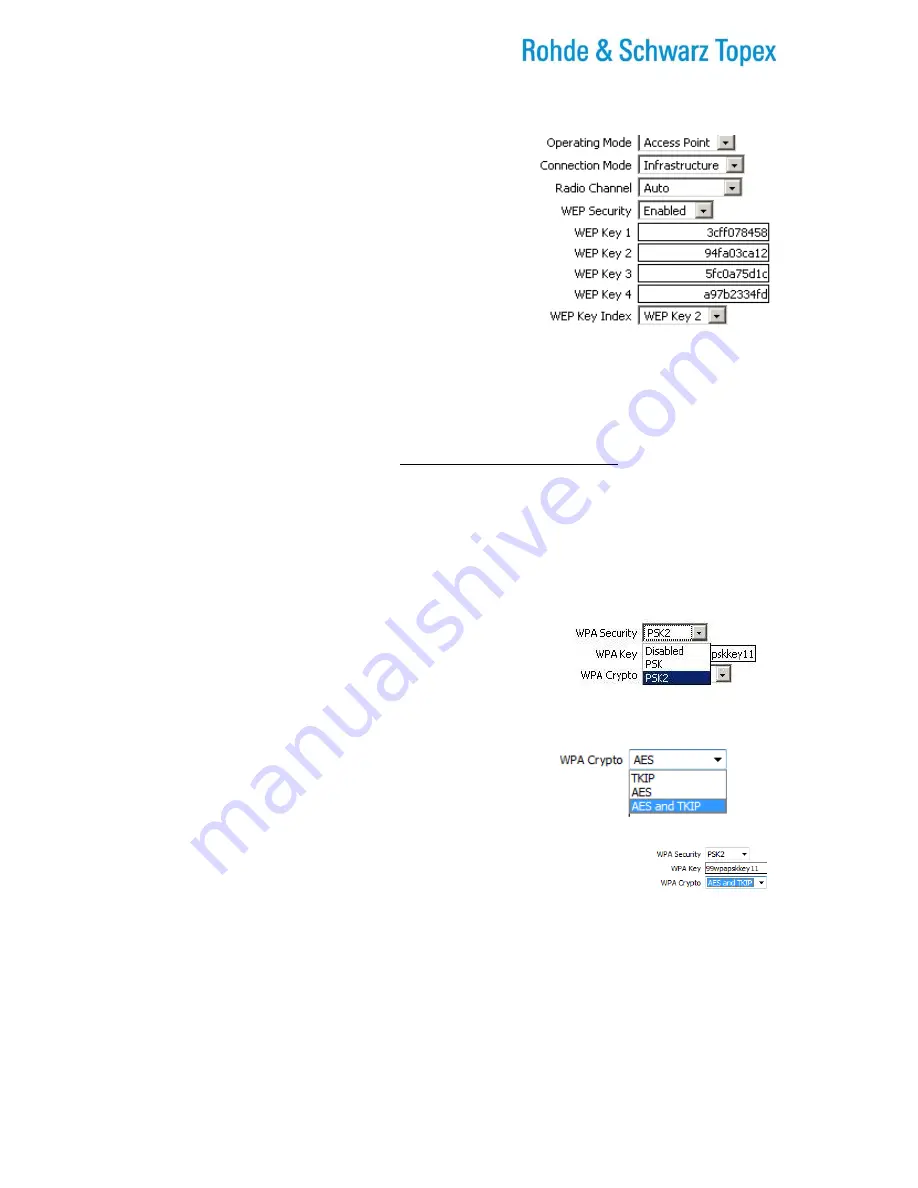
TOPEX Bytton (HSPA+ / LTE)
ByttonLTE(full)_genericUsermanual_sw306FAS_revN.1.docx
Page: 92 / 290
WEP Security
: Enables or disables WEP (Wired Equivalent Privacy) encryption.
WEP encryption is used to protect data transmitted from one end point to another.
The encryption level (64-bit or 128-bit) is given by the length
of the WEP Key you enter.
If you enable WEP, these fields become active as shown here:
WEP
Key
1
…
4
:
The
data
keys
used
for
encryption/decryption. There are up to four keys, their values
must be the same on the BYTTON Access Point and on the
wireless stations connected to it. When using a 64-bit WEP
encryption key, the password must be 5 characters long, and
when using 128-bit WEP encryption key the password must be
10 characters long.
Figure 5-38: Select and set up the WEP Security features.
WEP Key Index
: shows which key is active. You may have a list of pre-defined keys out of which the
system administrator periodically chooses the active one. The selected WEP key is automatically
published to the clients of the Access Point.
Warning
:
WEP is a basic encryption method and it was designed to provide a level of privacy equivalent
to an unsecured wired LAN, so you should not rely only on WEP for protection.
WPA sec
: WPA Security
Settings for Wi-Fi Protected Access, a Wi-Fi standard designed to improve the security features of WEP.
It features improved data encryption through the temporal key integrity protocol (TKIP) and user
authentication, through the extensible authentication protocol (EAP).
EAP is built on a secure public-key encryption system to ensure that only authorized network users can
access the Wi-Fi network.
You can select to Disable the WPA security, or to use PSK or
PSK2 keys.
PSK means "pre-shared keys": the keys are public, every user is
given the same passphrase.
The pre-shared key version is called WPA-Personal or WPA2-Personal, while the more secure version
using 802.1X server authentication is WPA-Enterprise or WPA2-Enterprise.
In this case you must enter the respective key in the “WPA Key”
field, the select the type of cryptography to be used for WPA:
You can select for cryptography TKIP, AES or both.
TKIP
- Temporal Key Integrity Protocol is an enhanced data encryption
technology that provides important data encryption enhancements, including a
per-packet key-mixing function, a message integrity check (MIC), an extended
initialization vector (IV) with sequencing rules, and a re-keying mechanism.
AES
- Advanced Encryption Standard, which is an encryption algorithm highly
recommended to ensure privacy of commercial transactions in the private sector.
Figure 5-39: Select and set up the advanced WPA Security features.
Of course, you should replace the default, generic passphrase (WPA Key ) “99wpapskkey11” with a
password of your own!
















































